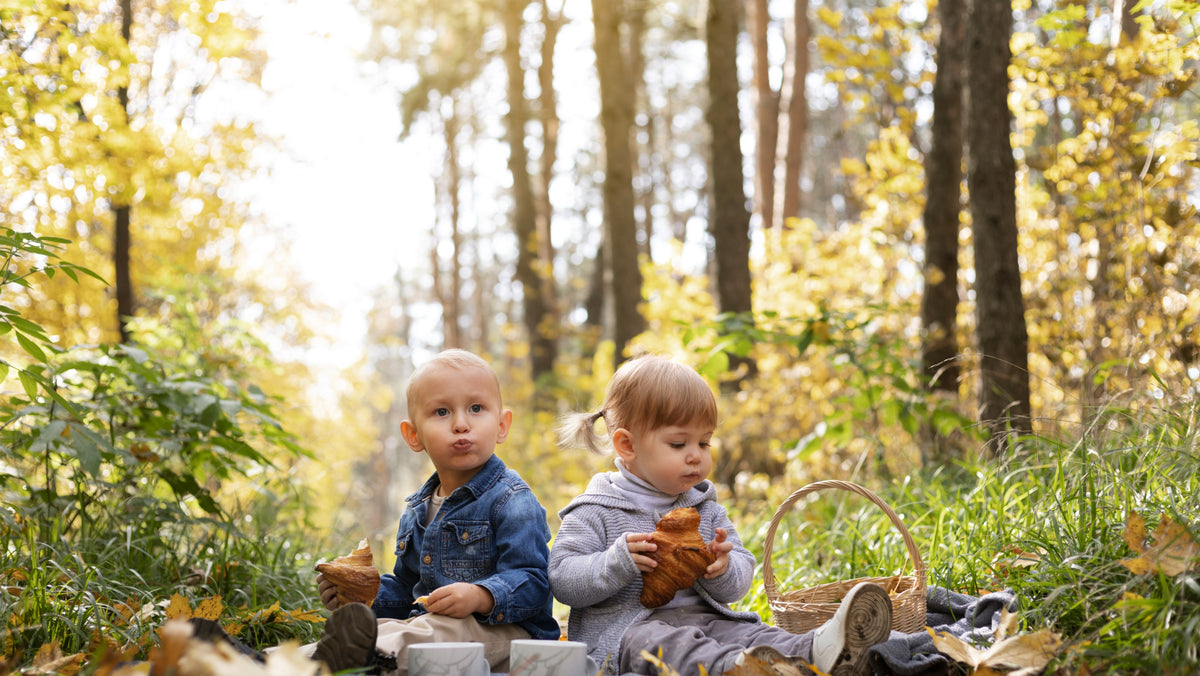Little & Brave Wee Nappies Home Composting Process


Home Composting Wee Nappies
As much as possible, if each person can create their own Home-Based Circular System with their Wee Nappies, we can minimise vehicle use, which reduces our carbon footprint as well as maximising our team’s focus on commercial composting.
After consulting with composting experts and in-house testing, we are able to offer you our tried and tested method for Home Composting your Little & Brave Wee Nappies yourselves.
The process outlined below offers customers the knowledge to satisfactorily compost organic materials as well as Little & Brave Eco Nappies, which only contain Wee (Urine).
Please be aware that Home Composting DOES NOT reach the same temperature as Commercial Composting does, and therefore DOES NOT pasteurise its contents.
For this reason we DO NOT recommend that you Home Compost your Poo Nappies.
What you need to Home Compost
- Little & Brave Eco Nappies (Wee Only)
- Compost Bin (available from Little & Brave)
- Biochar Compost Enhancer (available from Little & Brave)
- Compost Thermometer (available from Little & Brave)
- Drag Fork or Pitch Fork (available from Little & Brave)
- Food Waste (please remove all plastic stickers and wrapping)
- Coffee Grounds
- Coffee Husks
- Dried Leaves, Sawdust, Grass Clippings, Fine Woodchips or Hay
Please contact Little & Brave if you cannot source any of these materials.
 |
How to compost your Wee Nappies – Creating your BaseCreating your base is very important with Home Composting. It gives your compost pile nutrients to start up with, offers the compost pile and insulation layer and acts as a carbon source for your compost. You can see from the picture (left) a cut-away to reveal the typical contents of a Home Composting Bin. The bottom layer is the Base and essentially forms the ‘floor’ of the Compost Pile. To create your base, mix in equal amounts of the following at the bottom of your compost bin: Dried Leaves, Grass Cuttings (drier the better) and Coffee Husks (available from most coffee roasters for free). Optional extra is Dried Seaweed. Make sure your base is at least 300mm (30cm deep) and please make sure you allow it to rest naturally – DO NOT COMPRESS IT DOWN. Compost requires an aerobic environment, compress it defeats this. |

How to compost your Wee Nappies – Establishing your Compost Mix
Establishing your Compost Mix requires a mix of Carbon and Nitrogen.
We recommend that you hand-tear (lengthwise) the Little & Brave Nappies before establishing your mix.
Your Compost Mix will be roughly:
20% Wee Nappies
55% Green Waste (Food waste, Green Leaves, Seaweed or Grass Clippings)
20% Brown Waste (Dried Leaves, Brown Unwaxed Paper or Fine Woodchips)
5% Compost Activators and Nutrient Multipliers (information is below)

How to compost your Wee Nappies -Compost Activators and Nutrient Multipliers
Once you have Created Your Base and Established Your Compost Mix, you are ready to add Compost Activators and Nutrient Multipliers.
There are many exotic (and expensive) additives that can be used to achieve this, we have chosen the most cost-effective for our customers.
Compost Activator – Coffee Grounds – freely available from cafes
Nutrient Multipliers – Biochar – available online from Little & Brave.
Dosage: 5kgs of Coffee Grounds and 1kg of Biochar per full 220-litre bin.
How to compost your Wee Nappies – Turning your Compost Pile and Adding Nutrients
Once you have Created Your Base, Established Your Compost Mix and added your Compost Activators and Nutrient Multipliers, you will soon have a working Home Compost Pile.
Composting is a microorganic process where organic materials are biodegraded over a specific time period. Using a pitch fork or drag fork to ‘turn’ the pile, while adding in additional nutrients is of huge benefit.
Frequency: we recommend that you ‘turn’ your compost pile AT LEAST once each week. While you are turning the pile, add in additional nutrients in the form of food waste and coffee grounds.
How to compost your Wee Nappies – Temperature Testing
Once you have a working Home Compost Pile, it’s actually fairly easy to maintain the micro-climate. As long as you are adding nutrients and turning the pile, which aerates the compost – it should be sustained.
Home Composting regularly reaches 30 to 35-degrees Celsius. While this is sufficient to biodegrade organic materials, it is not hot enough to pasteurise any pathogens – so remember, No Poo Nappies!
How To: Push your Compost Thermometer into the core of the pile and leave it there for at least five minutes. You’ll have an accurate reading.
Frequency: As often as you like! It’s fun to watch the pile get hotter!
Safety
Due to safety and health reasons we do not recommend composting the poo nappies at home. Poo has more specific conditions which it needs to be present to ensure pasteurisation.
A Little About SAP
Our nappies contain SAP (super absorbing polymer) which is a hydrophilic polymer that can absorb and retain huge amounts of aqueous solutions. While SAP will not compost down, it is a fantastic compost additive and has been used extensively in potting mixes and agriculture for decades to help store water. It is especially beneficial in dryer areas prone to drought under larger trees to help store water in times where rainfall is sporadic and in young growth where a constant supply of moisture is beneficial to help promote growth.
Congratulations
You are now an active part of the movement towards a more sustainable future for all of us.
You can use your nutrient-dense, carbon-rich compost for all of your agricultural and horticultural needs around the home.
Growing prize-winning orchids? Perfect. Doing your first herb garden? Ideal. Giving compost away as a present? Fantastic.
At Little & Brave, we have often said that one of the best things about our journey, are the passionate, motivated people we meet.
Little & Brave Compost Bins are AvailableWe offer durable, all-weather 220-litre compost bins that are easily assembled and made from recycled ABS. There is very little assembly required and you do not require bolts, screws or tools to assemble or use our bins There is a door on the base of the compost bin, which allows you access to your nutrient-dense, carbon-rich compost Returning carbon to the soil from compost is the future! Please also see our Frequently Asked Home Composting Questions Page for further information. |

|



